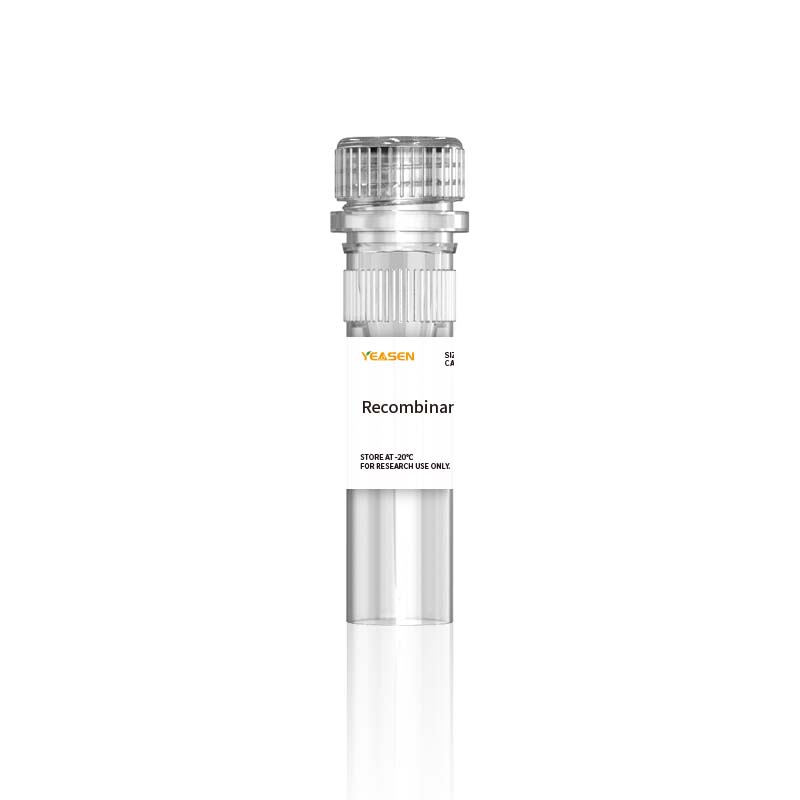Description
Receptors for the Fc region of IgG (Fc gamma R) are members of the Ig superfamily. Based on their genetic organization and molecular structure, three classes of human Fc gamma Rs: RI (CD64), RII (CD32), and RIII (CD16), which generate multiple isoforms, are recognized. Both Fc gamma RII and RIII are low-affinity receptors that bind IgG in the form of immune complexes. Two genes for human Fc gamma RIII, A and B, encoding a transmembrane receptor and a glycosylphosphatidylinositol (GPI) anchored protein, respectively, have been identified. Three allelic variants of Fc gamma RIIIB, NA-1, NA-2, and SH, exist. A soluble form of Fc gamma RIIIB corresponding to the extracellular region of the receptor is produced by proteolytic cleavage and circulates in plasma and other body fluids. The extracellular domains of Fc gamma RIIIA and B share 97% amino acid sequence homology. Whereas Fc gamma RIIIA is expressed on most effector cells of the immune system including macrophage, monocyte, NK cells, mast cells, eosinophils, dendritic cells and Langerhans cells, Fc gamma RIIIB is selectively expressed in neutrophils and eosinophils. Soluble Fc gamma RIIIB has a regulatory role in inflammatory processes.
Specifications
|
Synonyms |
CD16, FCG3, FCGR3B, FCRIIIB, IGFR3, CD16b (NA2), FCG3B, FCG3, FCGR3, FCR-10 |
|
Uniprot No. |
AAA35881.1 |
|
Source |
Recombinant Human Fc gamma RIIIB / CD16b (NA1) Protein is expressed from HEK293 Cells with His tag at the C-terminal. It contains Gly17-Ser200. |
|
Molecular Weight |
Approximately 22 kDa. Due to glycosylation, the protein migrates to 48-55 kDa based on Tris-Bis PAGE result. |
|
Physical Appearance |
Sterile Filtered White lyophilized (freeze-dried) powder. |
|
Purity |
> 95% as determined by SDS-PAGE and HPLC |
|
Activity |
SPR Data: Rituximab captured on CM5 Chip via Protein A can bind Human Fc gamma RIIIB (NA1) , His Tag with an affinity constant of 0.117 μM as determined in SPR assay (Biacore T200). |
|
Endotoxin |
< 1.0 EU per 1μg of the protein by the LAL method. |
|
Formulation |
Lyophilized from 0.22 μm filtered solution in PBS (pH 7.4). Normally 8% trehalose is added as protectant before lyophilization. |
|
Reconstitution |
Centrifuge tubes before opening. Reconstituting to a concentration more than 100 μg/mL` is recommended (usually we use 1 mg/mL solution for lyophilization). Dissolve the lyophilized protein in distilled water. |
Storage
The product should be stored at -20~-80℃ for 1 year from date of receipt.
2-7 days, 2 ~8 °C under sterile conditions after reconstitution.
3-6 months, -20~-80℃ under sterile conditions after reconstitution.
Recommend to aliquot the protein into smaller quantities when first used and avoid repeated freeze-thaw cycles.
Note
1. Avoid repeated freezing and thawing.
2. Please operate with lab coats and disposable gloves, for your safety.
3. This product is for research use only.
Produc Data

HB220707
Payment & Security
Your payment information is processed securely. We do not store credit card details nor have access to your credit card information.
Inquiry
You may also like
FAQ
The product is for research purposes only and is not intended for therapeutic or diagnostic use in humans or animals. Products and content are protected by patents, trademarks, and copyrights owned by Yeasen Biotechnology. Trademark symbols indicate the country of origin, not necessarily registration in all regions.
Certain applications may require additional third-party intellectual property rights.
Yeasen is dedicated to ethical science, believing our research should address critical questions while ensuring safety and ethical standards.

